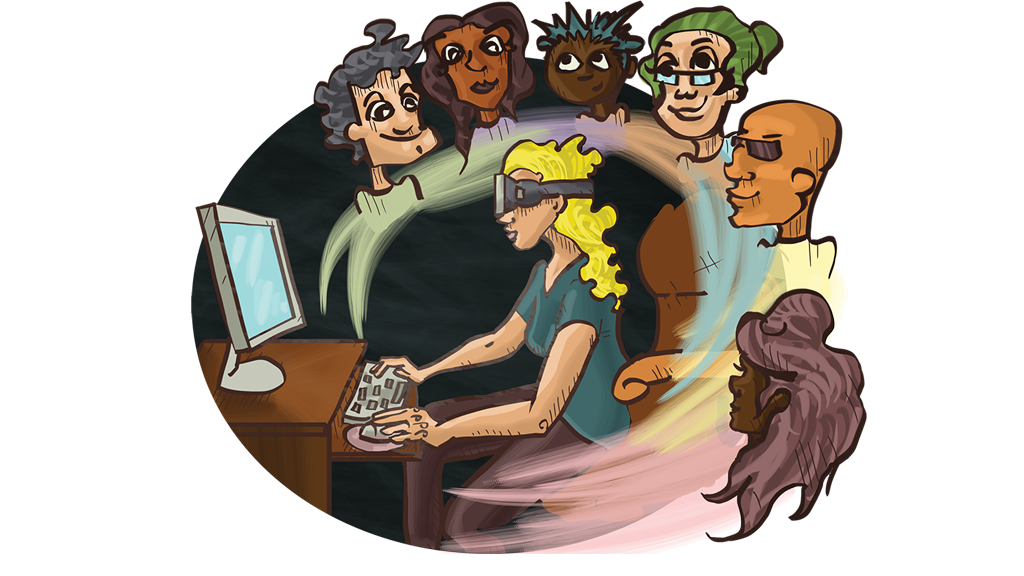Apr 11, 2017
New ResearchGate Project on Positive Technology
I have created a new project in ResearchGate for those of you who are interested to get the latest updates in PT research (including full-text access to most of our papers):
https://www.researchgate.net/project/Positive-Technology-...
It is also a useful tool to explore scientific collaboration opportunities, so if you find anything that matches your interests please let us know!
16:09 Posted in Positive Technology events, Research tools | Permalink | Comments (0)
Apr 06, 2017
Crowdsourcing VR research
If 2016 has been a golden year for virtual reality, there is reason to believe that the coming year may be even better. According to a recent market forecast by International Data Corporation (IDC), worldwide revenues for the augmented reality and virtual reality market are projected to grow from $5.2 billion in 2016 to more than $162 billion in 2020.

With virtual reality becoming a mass product, it becomes crucial to understand its psychological effects on users.
Over the last decade, a growing body of research has been addressing the positive and negative implications of virtual experience for the human mind. Yet many questions still remain unanswered.
Some of these issues are concerned with the defining features of virtual experience, i.e., what it means to be “present” in a computer-simulated reality. Other questions regard the drawbacks of virtual environments, such as cybersickness, addiction and other psychological disorders caused by prolonged exposure to immersive virtual worlds.
For example, in a recent article appeared in The Atlantic, Rebecca Searles wrote that after exploring a virtual environment, some users have reported a feeling of detachment that can last days or even weeks. This effect had been already documented by Frederick Aardema and colleagues in the journal Cyberpsychology, Behavior, and Social Networking some years ago. The team administered a nonclinical sample questionnaires to measures dissociation, sense of presence, and immersion before and after an immersion in a virtual environment. Findings showed that after explosure to virtual reality, participants reported an increase in dissociative experience (depersonalization and derealization), including a lessened sense of presence in objective reality.
However, more research is needed to understand this phenomenon, and other aspects of virtual experience that are still to be uncovered.
Until today, most studies on virtual reality have been mainly conducted in scientific laboratories, because of the relatively high costs of virtual reality hardware and the need of specialist expertise for system setup and maintenance.
However, the increasing diffusion of commercial virtual reality headsets and software could make it possible to move research from the laboratory to private homes. For example, researchers could create online experiments and ask people to participate using their own virtual reality equipment, eventually providing some kind of rewards for their involvement.
An online collaboration platform could be developed to plan studies, create research protocols, collect and share data from participants. This open research strategy may offer several advantages. For example, the platform would offer researchers the opportunity to rapidly get input from large numbers of virtual reality participants. Furthermore, the users themselves could be involved in formulating research questions and co-create experiments with researchers.

In the medical field, this approach has been successfully pioneered by online patient communities such as PatientsLikeMe and CureTogether. These social health sites provide a real-time research platform that allow clinical researchers and patients to partner for improving health outcomes. Other examples of internet-based citizen science projects include applications in astronomy, environmental protection, neuroscience to name a few (more examples can be found in Zooniverse, the world’s largest citizen science web portal).
But virtual reality could extend the potential of citizen science even further. For example, virtual reality applications could be developed that are specifically designed for research purposes, i.e., virtual reality games that “manipulate” some variables of interest for researchers, or virtual reality versions of classic experimental paradigms, such as the “Stroop test”. It could be even possible to create virtual reality simulations of whole research laboratories, to allow participants to participate in online experiments using their avatars.
09:41 Posted in Research tools, Telepresence & virtual presence, Virtual worlds | Permalink | Comments (0)






